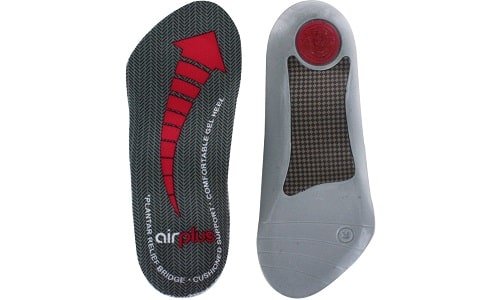Pain in the plantar fascia, which runs from the foot to the heel, is a common symptom of plantar fasciitis and may make even the simplest of tasks difficult. To alleviate plantar fasciitis, it is important to know your foot and the factors that contribute to the condition.
A good shoe can help relieve pain of your plantar fasciitis to a good extent. Thus, one must have them in their shoe wardrobe if they are suffering from Plantar Fasciitis issue.
An evaluation of your gait and feet by a podiatrist expert or a physical therapist will provide the most helpful shoe suggestions.

List of Best Shoes For Plantar Fasciitis In India
How To Choose The Best Shoes for Plantar Fasciitis
It’s crucial to look for a shoe that gives you a good amount of cushioning and arch support while you’re suffering from plantar fasciitis. Choosing a shoe that is not just comfortable for standing but also for your preferred hobbies is essential
Firmness and support
The foot’s arch performs a number of important functions, including supporting the body’s weight and distributing it evenly, as well as absorbing stress caused by walking as well as other weight-bearing activities. Many individuals who suffer from plantar fasciitis have also flat feet. Stress on the plantar fascia or its attachment sites may be alleviated by properly supporting the arch.
Soft impact and cushion
Pain from plantar fasciitis may be alleviated by wearing shoes with enough heels cushioning, since here is where the majority of the ground response forces are felt throughout the gait cycle.
Stability
Overpronation and great movement at your heel may be avoided with a shoe that provides enough sole & heel cup stability. Better foot alignment inside the shoe might be promoted by a shoe that snugs at the heel. Even joints just above ankle may benefit from this kind of adjustment.
Removable soles
Shoes with detachable insoles are more adaptable, which may be helpful for those with plantar fasciitis who also need additional support. For instance, a rocker sole is characterised by a larger profile and a flatter, more rounded heel than conventional soles.
This prevents the foot from resting flat on the ground, which may be painful for those whose plantar fascia flares up while walking or standing.
Heel support
They need to provide stability at the back of the heel to prevent excessive pronation while walking. The term “pronation” refers to the leveling of the arch that occurs as the foot slides inward. This causes additional strain on Plantar Fascia.
If the heel is adequately supported, the foot is more likely to remain in a neutral posture. Remember that little, intentional movement is natural and beneficial for reducing the impact of walking or jogging.
A strong heel cup, or sufficient padding in the shoe’s sole, may provide the support your feet and legs need.
Arch support
Evidence suggests that the Plantar Fascia may benefit from arch support by being subjected to less stress. They may be built into the design of the shoe, or they may be added using inserts.
A good pair of shoes should include arch support even if you choose not to use insoles. This will assist your feet stay in place and prevent them from collapsing under your weight while you walk.
Rocker Bottoms
The rocker-bottom is not standard in footwear, and not everyone can walk comfortably in these shoes. The Plantar Fascia might feel the effects of this, hence they are often prescribed. When used in conjunction with an orthotic, their beneficial effects are amplified.
Wide toe box
High heels and formal shoes are notorious for having a cramped toe box. The tendon that connects the toes to the heel may become painful, and toe mobility may be limited as a result. Choose shoes that allow your feet to splay out comfortably.
People who have naturally broad feet are not excluded from this. The toe box of a pair of wide-foot shoes is intentionally made to be more spacious.
Get 1-2 inch heel
It’s not a good idea to wear shoes with a heel or flip-flops. Your plantar fascia, Achilles tendon, and maybe tendons in the ankle can all be pulled on by the angle the foot rests at when you walk. Any more than a dip of around an inch and a half will induce the Achilles to tighten too much, worsening PF discomfort.
Santosh Kumar is a Professional SEO and Blogger, With the help of this blog he is trying to share top 10 lists, facts, entertainment news from India and all around the world.





